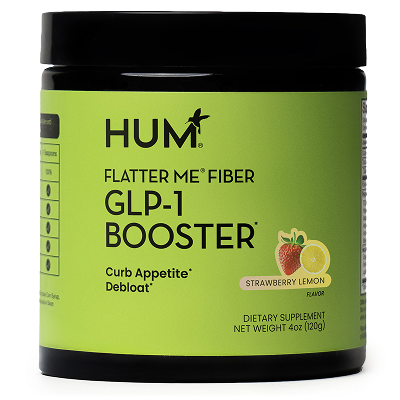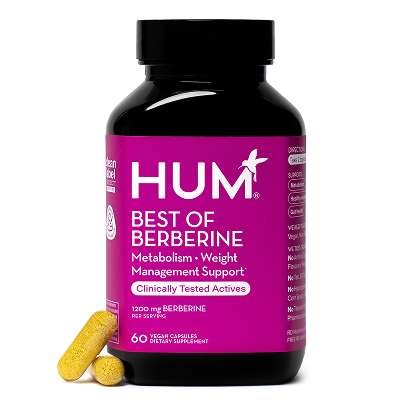Weight loss drugs like Ozempic and Wegovy have become household names over the last few years thanks to their effectiveness in suppressing appetite and helping people shed unwanted pounds. But for many, the thought of having to endure side effects like nausea, vomiting, and gastrointestinal discomfort just isn’t worth it. And unfortunately, that’s what it’s like for many GLP-1 users. However, microdosing has been gaining traction, offering individuals the opportunity to both lose weight and avoid (or at least minimize) the side effects of the drug. But is only injecting a partial dose safe and effective? And are there alternatives if you’re not quite ready to take the pharmaceutical plunge?
Let’s dive into what microdosing weight loss injections really means—plus holistic alternatives that support your health from the inside out.
Why More People Are Turning to Microdosing GLP-1s
Microdosing GLP-1 medications is growing in popularity as a personalized approach to weight management, particularly for those who are sensitive to full-dose medications or looking for more flexibility. “Some individuals turn to microdosing GLP-1 drugs as a way to tailor treatment to their individual needs and responses,” says Assistant Professor of Medicine at YSM, Bubu Banini. “For instance, one may find that their response to the 0.5 mg dose of semaglutide has plateaued, but because the 1.0 mg dose is causing them severe side effects, they may opt to microdose at 0.75 mg for a period of time prior to advancing to the full dose.” Dr. Banini also notes that microdosing can help reduce the overall cost of medication by stretching out the supply—using half the standard dose to make the treatment last twice as long. Others turn to microdosing as a maintenance strategy after achieving their weight-loss goals.
Who is Microdosing Ideal for?
For many, weight loss injections are highly effective—but they’re also known for their uncomfortable side effects, including nausea, bloating, constipation, and fatigue. “Microdosing GLP-1 medications may be ideal for individuals looking for a gentle on-ramp to metabolic support, those with mild weight concerns, early-stage insulin resistance, or who are prioritizing sustainable lifestyle shifts alongside pharmaceutical guidance,” says Dr. Liliana Lopez, DNP. “It’s also an appropriate consideration for patients who are highly sensitive to medications and prefer a conservative, wellness-integrated approach.
Lopez uses microdosing as a bridge, pairing it with nutritional support and movement, along with recovery tools like hyperbaric oxygen and red light therapy to “help the body recalibrate rather than override it.” Microdosing may also be ideal for those who:
- Don’t have a large amount of weight to lose
- Are seeking cost-effective options (lower doses can mean longer-lasting supply)
- Are looking for support maintaining their weight post-weight-loss
Microdosing Injections: Pros and Cons

If you’re considering microdosing, it’s critical to first understand both sides before starting the treatment:
Pros
- Fewer side effects: Injecting smaller doses may reduce the drug’s side effects, including nausea, stomach pain, and GI distress.
- Gentler on the body: A gradual approach can feel less extreme, especially for those who are metabolically sensitive.
- Cost savings: A lower dose may stretch out a prescription, saving money over time.
- Flexibility: Some people use it as a “maintenance” option after achieving their weight loss goals.
- Improves insulin levels: Microdosing balances blood sugar levels, stimulating insulin and suppressing glucagon when needed.
Cons
- Limited research: Most clinical studies are based on full therapeutic doses. There’s limited data on whether microdosing leads to meaningful, sustained weight loss.
- May not suppress appetite enough: Lower doses may be too weak to significantly impact cravings or hunger hormones, especially if you underdose, making the medication ineffective.
- Risk of unsupervised use: Self-adjusting doses without medical guidance or outside a structured wellness plan. This can cause a risk of nutrient deficiencies, GI issues, and dehydration.
- Compounded Drugs: Compounded drugs used to microdose are not approved by the FDA, making them less safe. (While not all microdosing GLP-1 medications are compounded, it makes a difference in the cost and availability of the drug.)
- Contamination: The medication and needles can introduce contamination, bacteria, and other toxins into the body that can make you sick and cause infection.
Can Microdosing Be Done Safely?
While there is understandable cause for concern when microdosing GLP-1 medications, it can still be done safely. “When done under medical supervision, microdosing can be a safe and effective strategy,” Lopez says. “At lower doses, patients often experience fewer side effects like nausea, fatigue, or appetite suppression that can feel too aggressive at standard doses. But “lower dose” doesn’t mean “risk-free.” Even at small levels, GLP-1s influence digestion, insulin response, and hydration, so routine check-ins, bloodwork, and whole-body assessments remain important. Safety comes from smart guidance and full-spectrum care, not just the size of the syringe.”
Not Ready for Injections? Try a Natural Approach First
If you’re feeling hesitant about jumping into GLP-1 injections—or you’re concerned about side effects or cost—there are effective, more natural ways to support your metabolism and manage weight. While medications can be powerful tools, starting with a holistic foundation often sets the stage for more sustainable results.
Here are some key lifestyle pillars to focus on:
- Eat a balanced, protein-rich diet: Protein helps stabilize blood sugar and keeps you feeling full longer, reducing cravings throughout the day.
- Incorporate strength training and cardio: Building muscle increases your metabolic rate, while cardio supports overall fat loss and heart health.
- Support gut health: A thriving gut microbiome plays a key role in appetite regulation and GLP-1 hormone production.
- Prioritize stress management and quality sleep: Chronic stress and poor sleep can disrupt hunger hormones and contribute to weight gain.
In addition to these core strategies, holistic supplements can offer targeted support—especially when it comes to enhancing GLP-1 activity naturally. HUM offers two standout supplements, both designed to support metabolic health and boost GLP-1 levels:
Best of Berberine
Berberine is a powerful plant compound shown to support insulin sensitivity, helps maintain healthy blood sugar levels, and promote a healthy metabolism. Emerging research even suggests that berberine may help stimulate the body’s natural GLP-1 production—making it a smart, supplement-based alternative to pharmaceuticals.
Flatter Me Fiber GLP-1 Booster
This fiber-based supplement blends soluble fiber with gut-friendly nutrients to naturally increase GLP-1 levels, potentially doubling them. It helps promote satiety, soothe digestion, and debloats, all in just one use.
Microdosing weight loss drugs can be a smart move if done with care and overseen by a medical professional, especially for those who are sensitive to side effects or don’t need aggressive weight loss. But it’s not a one-size-fits-all solution—and it’s not without its downsides.
If you’re not ready to start injections or want to try the natural route first, you have options. From nutrition and movement to supplements like berberine and fiber boosters, you can support your metabolic health in a way that’s gentle, effective, and more sustainable in the long term. Always talk to a healthcare provider before starting any new weight loss strategy—whether it’s a prescription medication or a supplement. In the end, your health journey should be one that supports your body, budget, and peace of mind.

5 Key Nutrients You May Need While Taking Ozempic, or Any Other Weight Loss Drug

The Link: How This Natural GLP-1-Boosting Supplement Can Help With PCOS

GLP-1 Boosting Smoothies: 5 Recipes for Weight Management and Blood Sugar Balance







